Feliz año nuevo 2020 te desea todo el equipo de Campos.
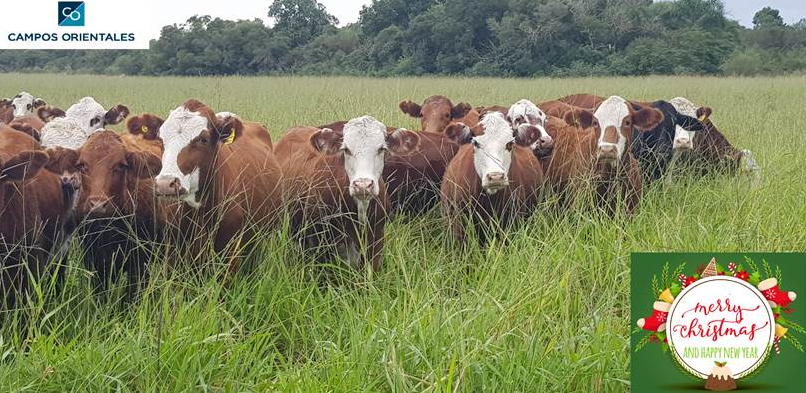
Feliz año nuevo 2020 te desea todo el equipo de Campos.

Situación climática: Se experimentó temperaturas más altas y condiciones secas de lo normal durante septiembre a noviembre. Las lluvias irregulares han aumentado en los bajos niveles de agua en el río Paraguay y sus afluentes, lo que ha interrumpido el tráfico de barcazas y el bombeo de agua para los productores de arroz. Tuvimos que soportar períodos de restricción de bombeo de agua (ya sea total o parcial) desde el río impuesto por las autoridades.
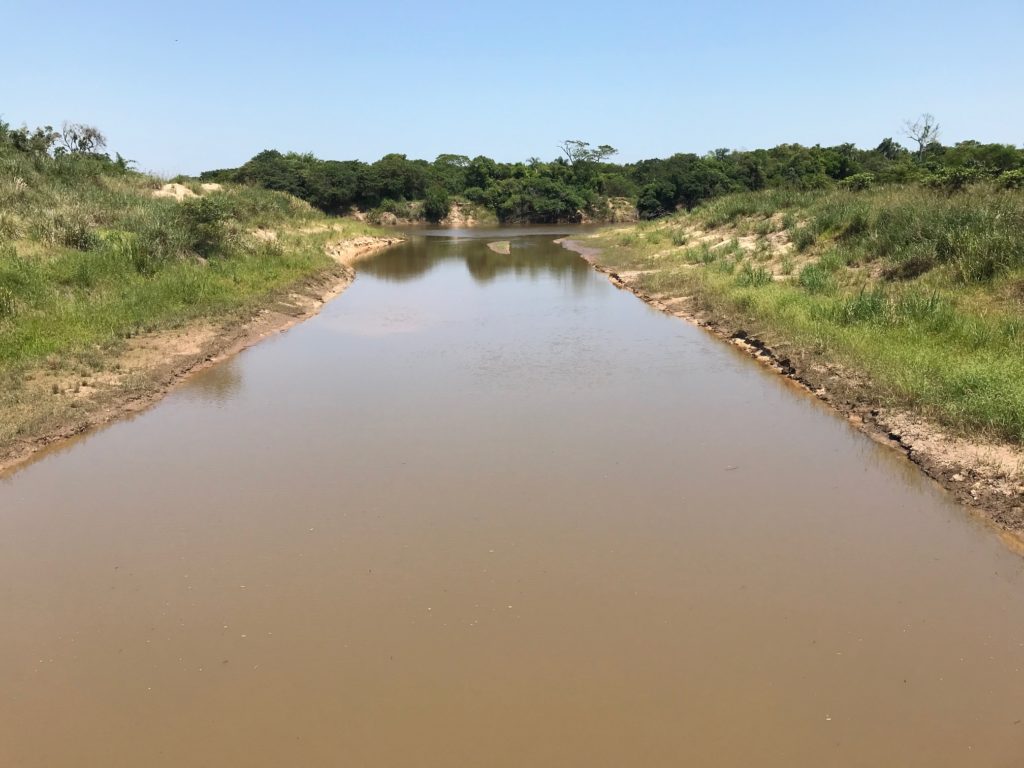
No obstante, gracias a nuestro lago artificial de 480 ha, pudimos reducir el problema y seguir irrigando los campos para las plantas de arroz bajo riego (siembra en etapa). Entre todos nuestros vecinos, somos el único que tiene esta reserva de agua como se puede ver en la vista aérea de la zona. Dependiendo del nivel de nuestro río, también podríamos obtener una autorización para bombear alternativamente (10 horas al día).
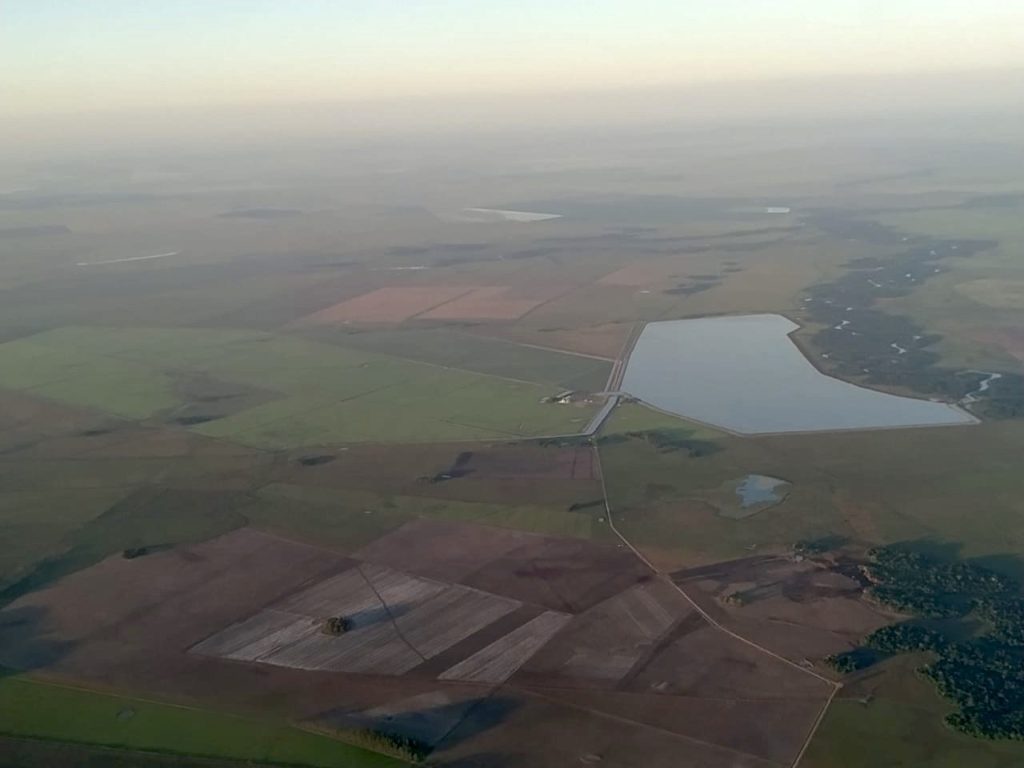
La lluvia en Paraguay ahora aumentó ligeramente, pero todos los cultivos todavía están preocupados por la naturaleza irregular de las lluvias.
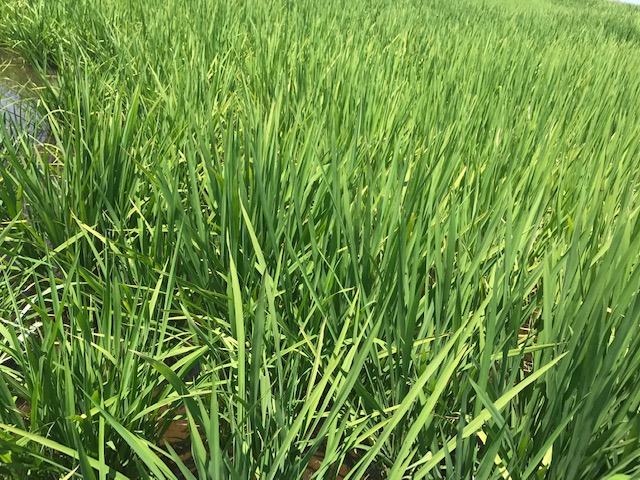
Mercado: toda la región, actualmente en crisis, más bien impulsada por la situación económica o política (Chile, Colombia, Perú, Argentina, Bolivia y Brasil). La moneda de Brasil alcanzó en noviembre su nivel histórico más bajo frente al dólar estadounidense. Sabiendo que alrededor del 90% de la producción de arroz paraguayo va a Brasil, se esperan precios de apertura muy bajos para esta temporada. Los productores paraguayos también están preocupados por el cambio en la administración en Argentina (las exportaciones se trasladan por el río Paraná a los puertos de Argentina). La administración anterior de la Sra. Kirchner impuso un impuesto a los cultivos cuando transitaron por Argentina y los agricultores están preocupados de que el impuesto se restablezca nuevamente bajo la nueva administración.
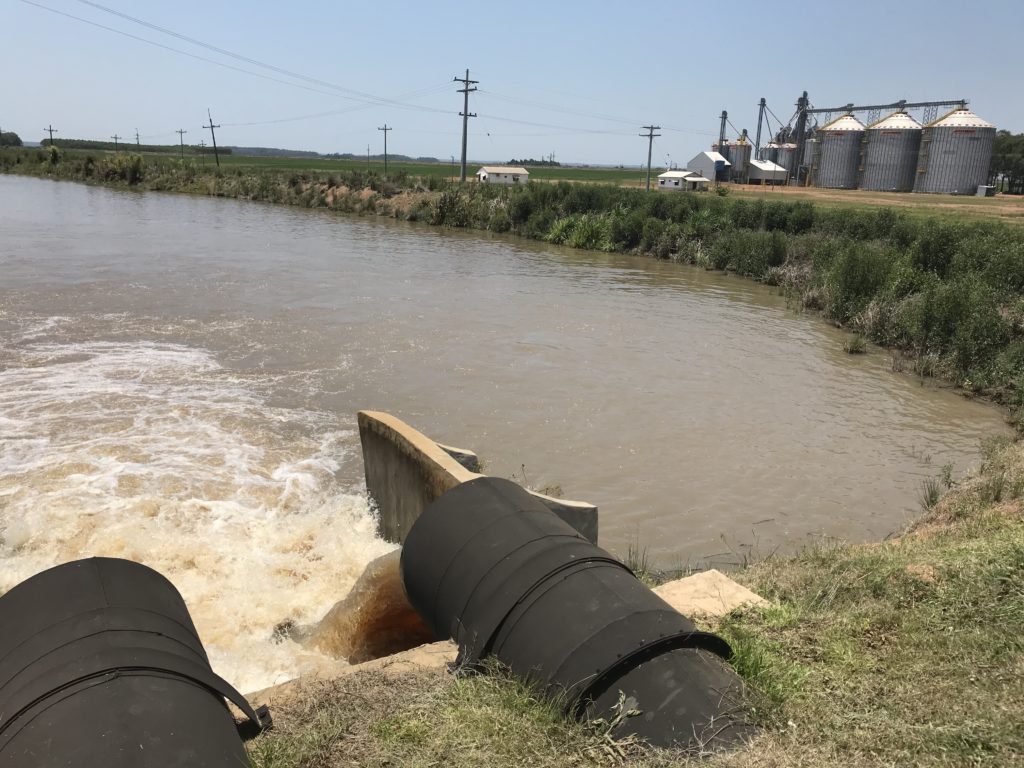
Producción: 1.250 ha están bajo riego y se han sembrado 350 ha más. completado El intenso color verde uniforme del cultivo muestra que el agua está bien distribuida y que las plantas utilizan bien el nitrógeno aplicado. Las primeras parcelas sembradas ahora están en etapa de floración y se puede ver alguna aplicación aérea de fertilizante realizada en las últimas parcelas sembradas.
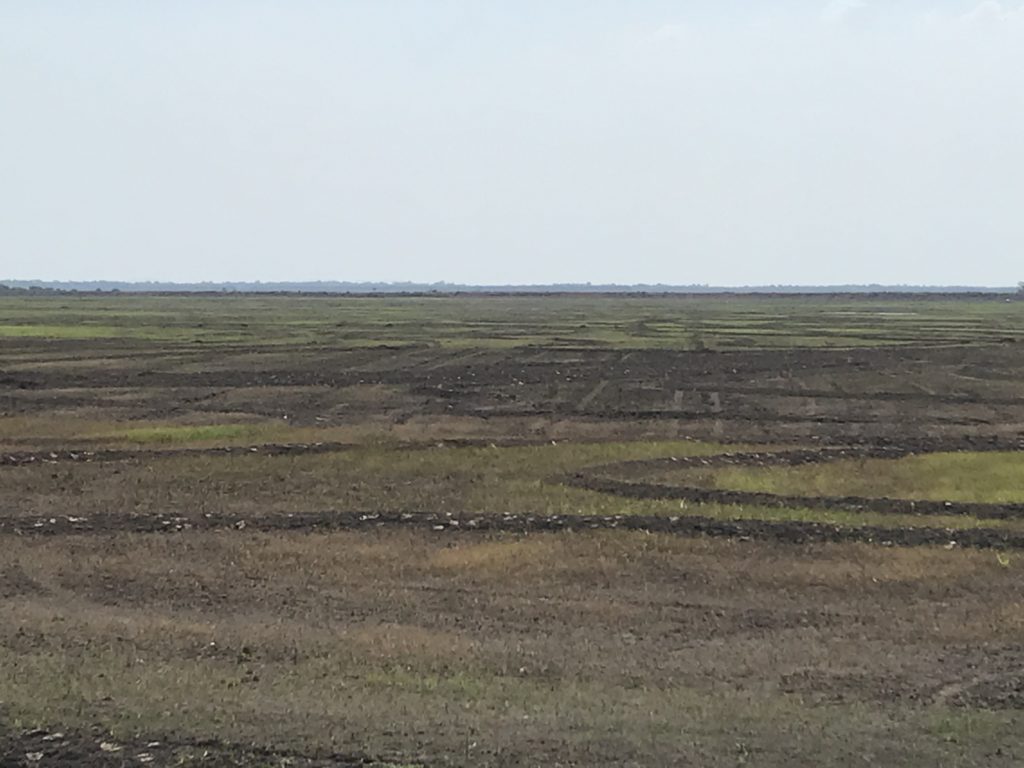
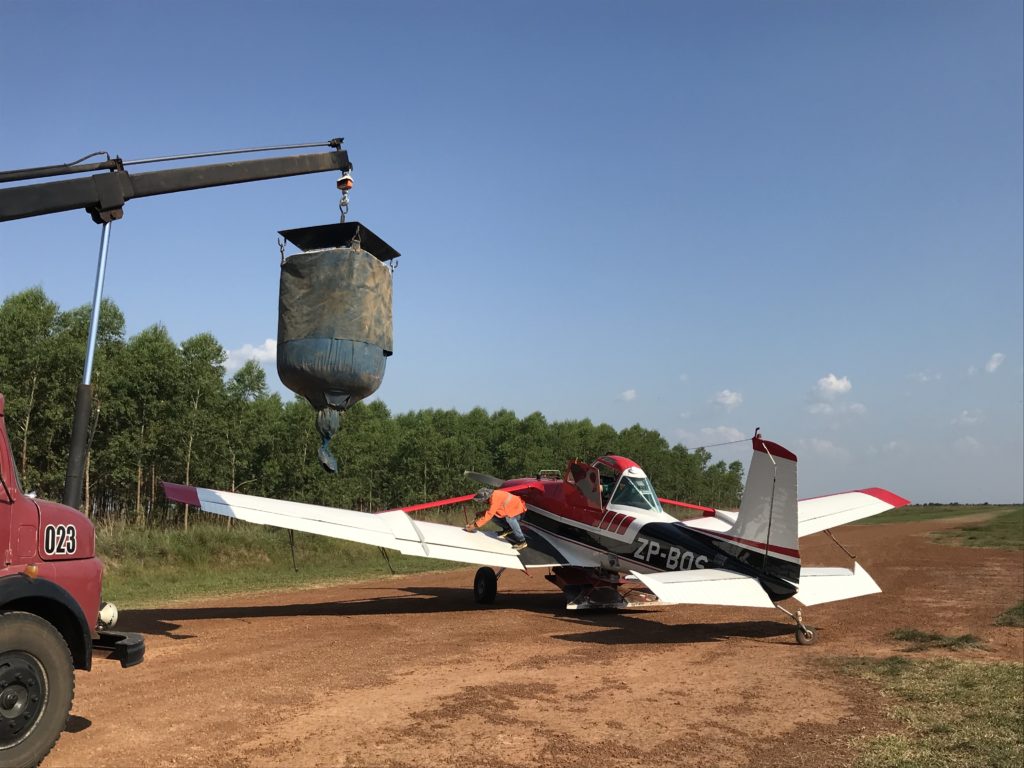
Hemos registrado algunas lluvias menores durante las dos primeras semanas de octubre que ayudaron a que el río recuperara un poco de volumen y sirvió también para el desarrollo de las semillas en el primer bloque sembrado a fines de agosto (Bloque G). Mientras tanto, como el río es reducido, tuvimos que ajustar el nivel óptimo de riego de los campos que ya están en etapa de crecimiento bombeando agua desde nuestro embalse. Por consiguiente, cualquier agua de lluvia ayuda a rellenar el depósito.
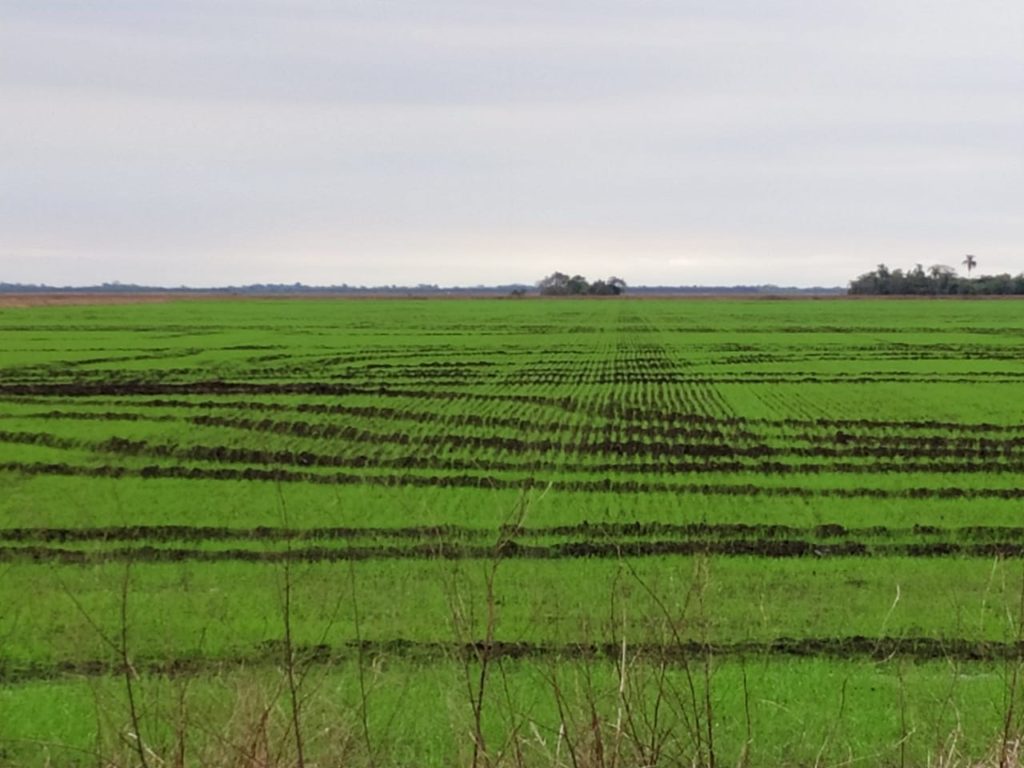
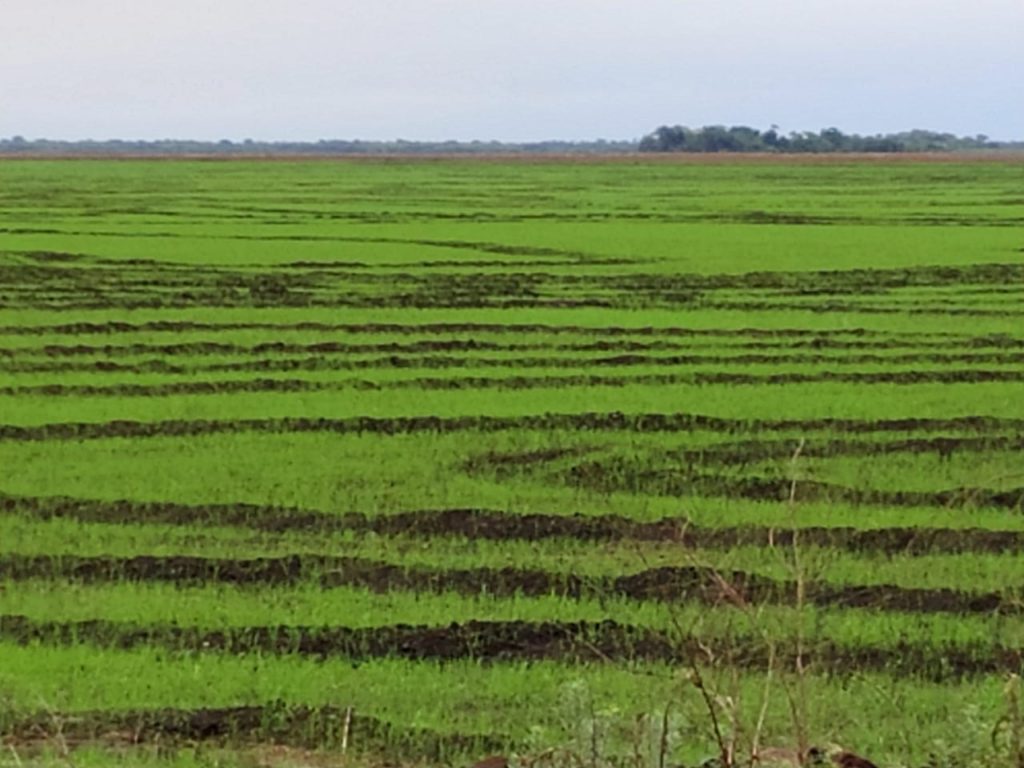
El intenso color verde propio del cultivo indica que el agua está bien distribuida y que las plantas están utilizando bien el nitrógeno aplicado.
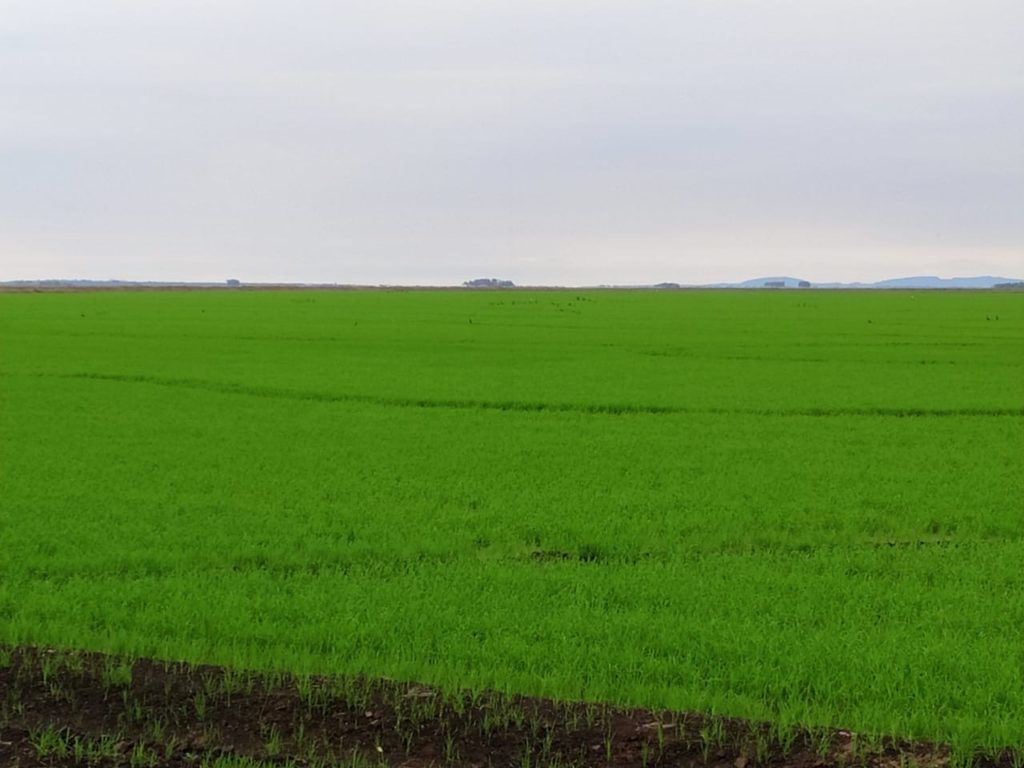
El cultivo de arroz está fuertemente influenciado por la distribución de agua y debe mantenerse en el campo durante todo el período de crecimiento. Las inundaciones permanentes ayudan a asegurar suficiente agua (eliminación del estrés por humedad y microclima favorable para la producción de cultivos) con una mayor cantidad de nutrientes como fósforo, hierro y manganesio y control de malezas.
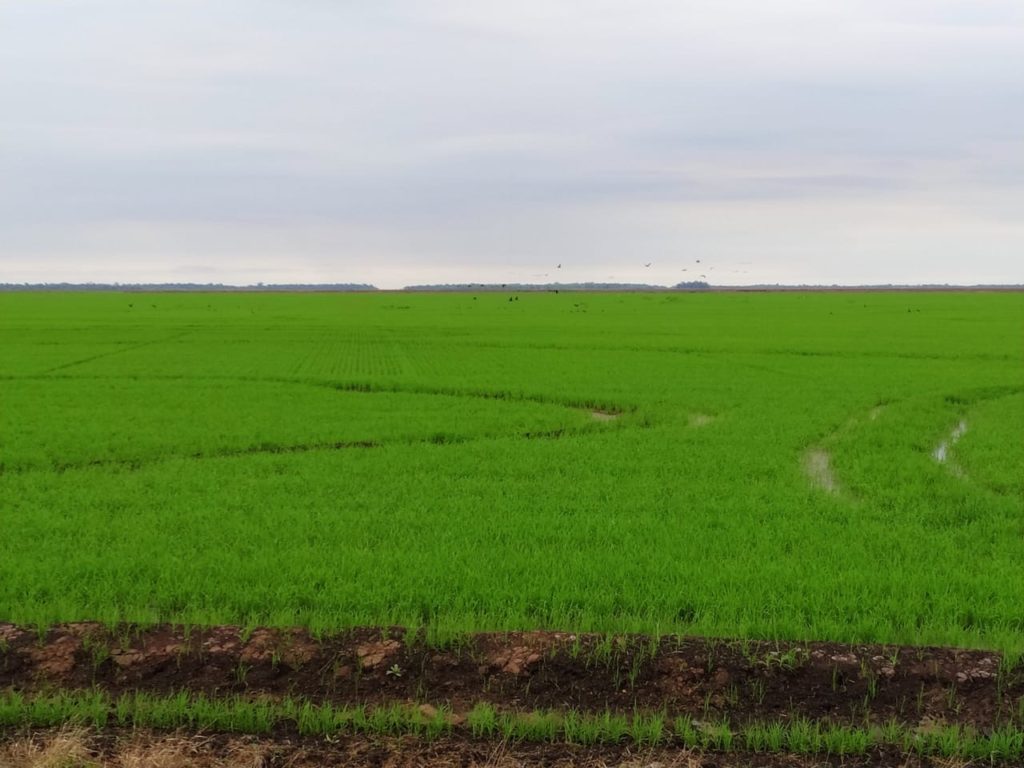
La superficie de la segunda etapa (430 ha de arroz con cáscara) iniciara a regarse a mediados de octubre. Puede ver algunas semillas emergentes que se benefician del riego natural suministrado por algunas aguas pluviales.

La semana pasada de octubre, sembramos otro bloque de alrededor de 240 ha. (Bloque E – etapa 3). Luego, los bloques D y C se sembrarán en la etapa final, sujeto a la cantidad de agua (nivel del río) ya que todos los demás campos requieren agua al mismo tiempo pero no con la misma distribución, y el bombeo tiene un costo. Entonces, deberíamos tener una siembra de 4 etapas.
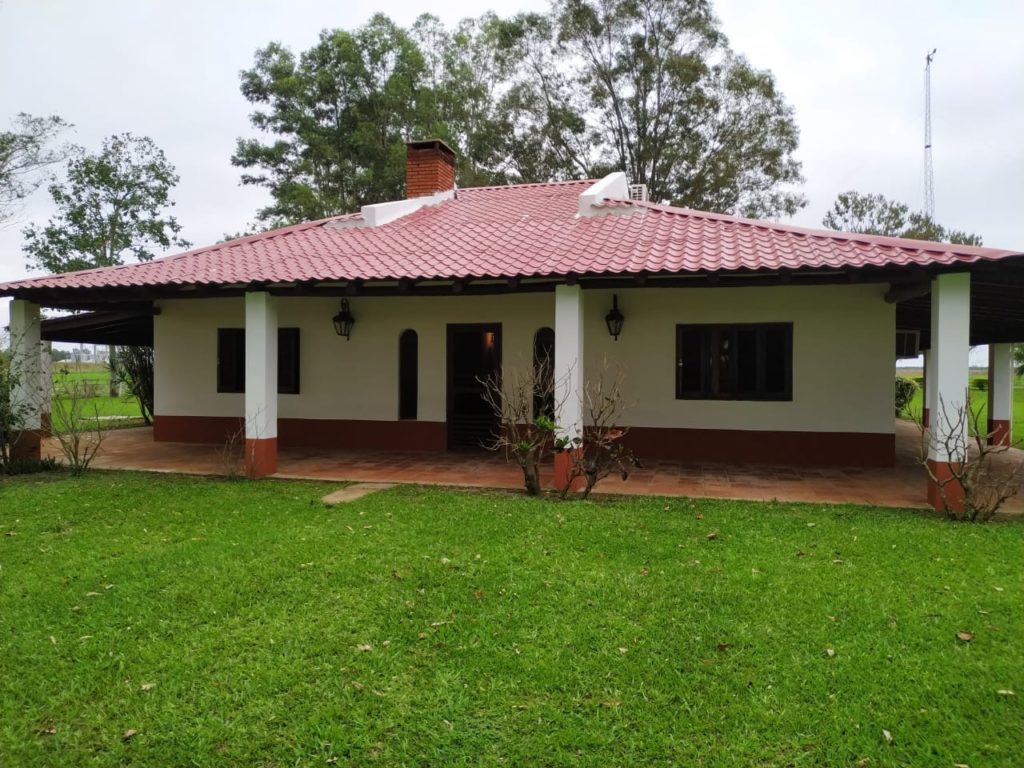
También finalizamos la remodelación de la casa principal. El techo se vio particularmente afectado por las lluvias torrenciales registradas en mayo en el país (por favor ingrese en, Mayo 2019).
Luego de sembrar nuestra superficie en la primera etapa, estamos a punto de reiniciar la siembra de la etapa 2 (430 ha de arroz con cáscara). La tierra ha sido preparada y se sembrará durante el primer fin de semana de octubre. Nuestra estrategia es sembrar por etapas para reducir los riesgos operativos (problemas climáticos y restricciones de riego) mientras tendremos un mejor control de las parcelas, ya que no estarán todas en la misma etapa en el mismo momento.
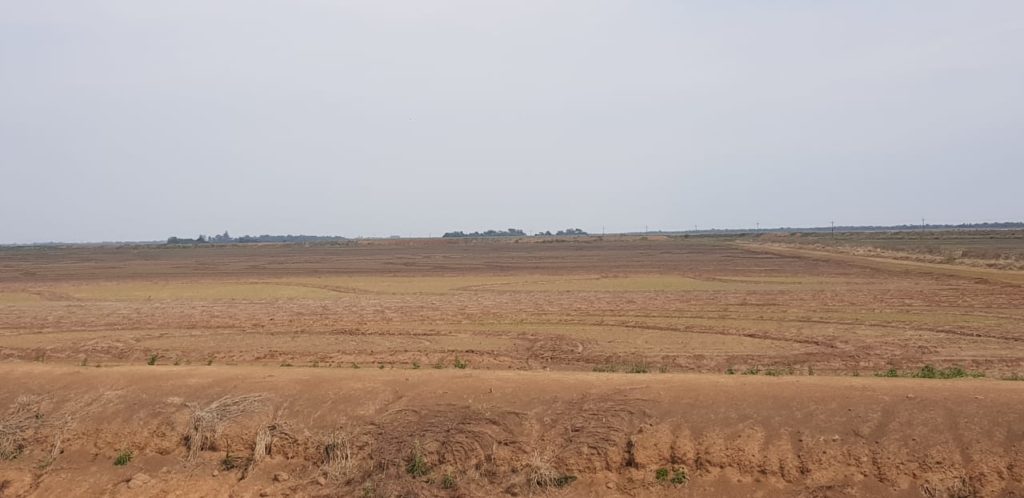
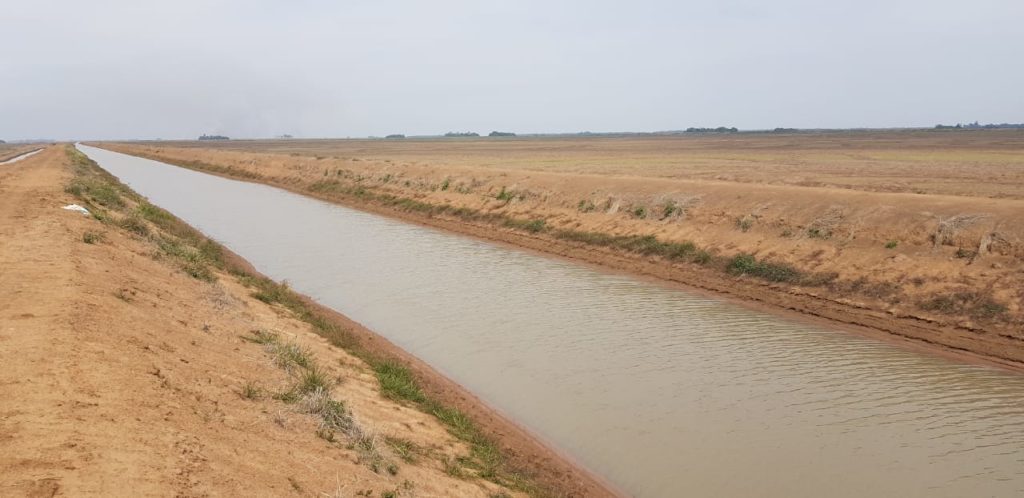
La siembra de la primera etapa se está desarrollando tan bien como se puede ver (se aplicaron herbicidas y nitrógeno) e iniciaremos a regar esas parcelas en aproximadamente 7 días.
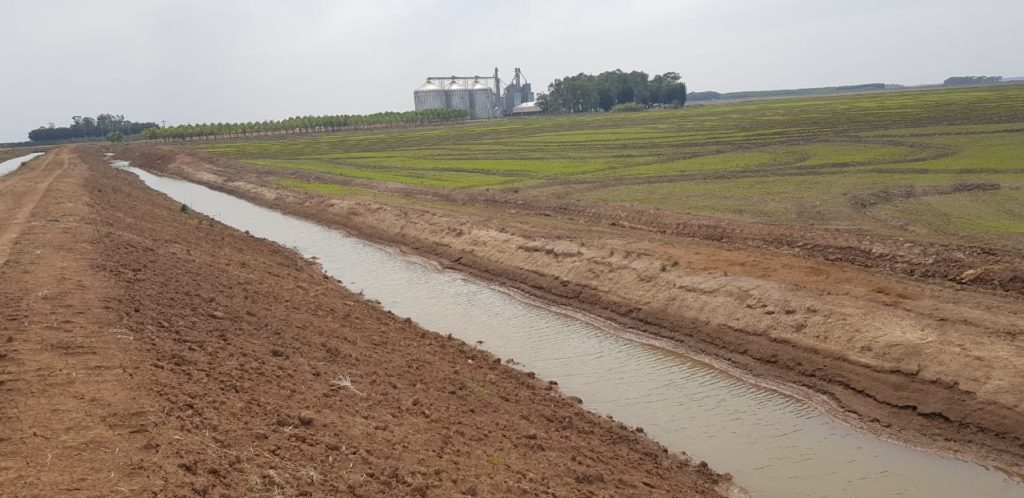
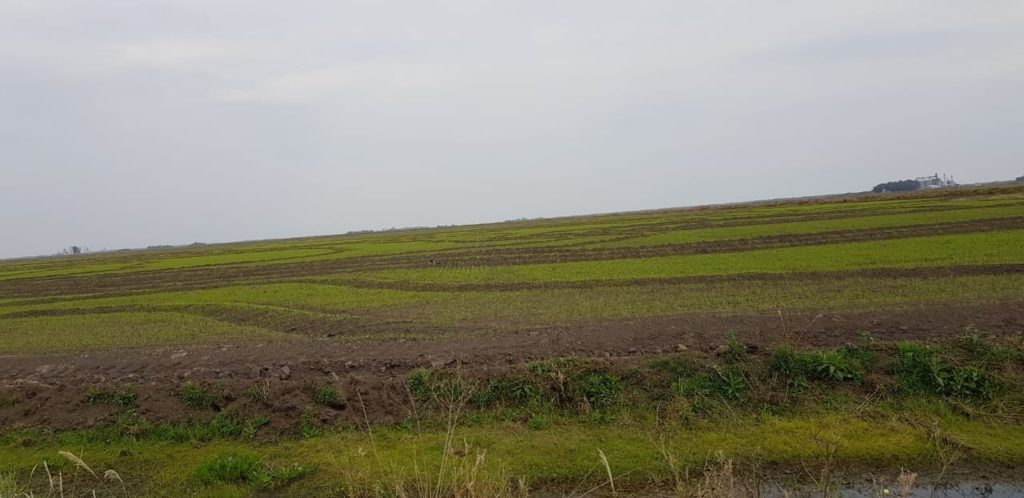
Actualmente, el río está en un nivel bajo y no permite bombear agua. Se pronostican lluvias y también tenemos agua almacenada en nuestro embalse para iniciar el proceso de riego.
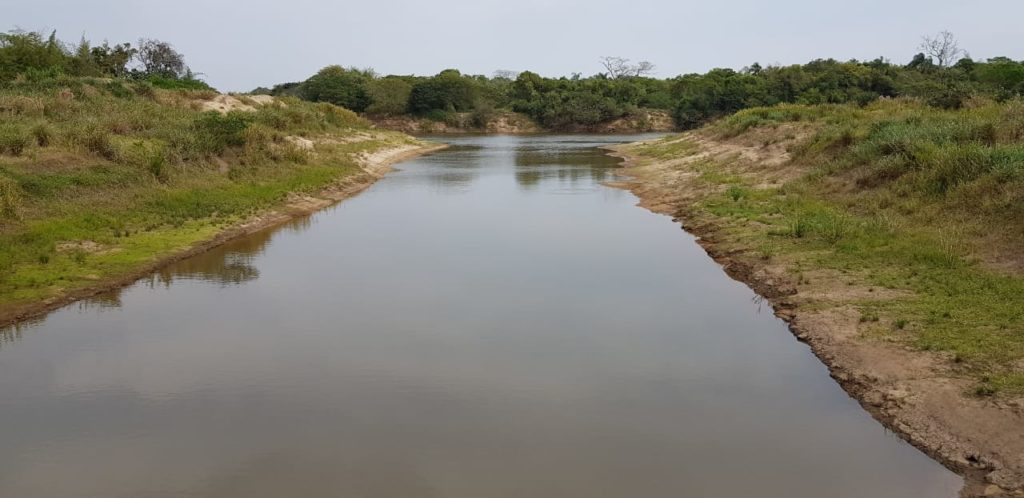
Actualmente estamos en el pico de siembra y hasta ahora se han sembrado 540 ha en muy buenas condiciones. Vamos a reiniciar la siembra a fines de septiembre, ya que nuestro objetivo es sembrar en 3 etapas la superficie total que asignamos a la producción de arroz con cáscara esta temporada. De esta forma, podemos obtener una cosecha por etapa y reducir los riesgos operativos (problemas climáticos y restricciones de riego) mientras tendremos un mejor control de las parcelas, ya que no estarán todas en la misma etapa en el mismo momento.

A continuación se puede apreciar el tratamiento de las semillas con insecticidas y fungicidas aplicados antes de sembrar.

Para las primeras parcelas sembradas, se aplicarán herbicidas y nitrógeno. El nitrógeno es el nutriente más importante para la productividad del arroz, ya que fomenta el crecimiento vegetativo del arroz. Las semillas ya están emergiendo como se puede corroborar.
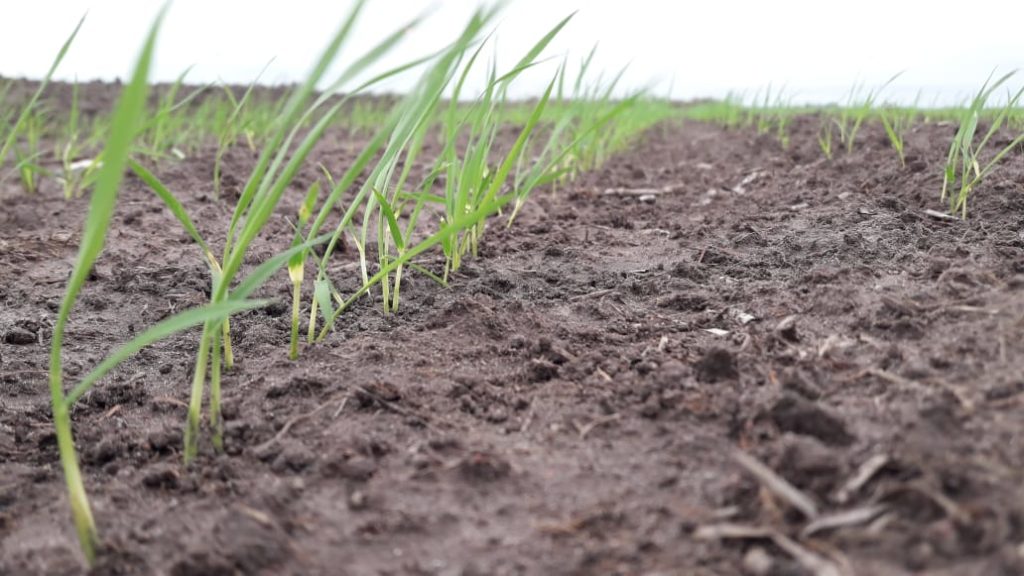

El 27 de agosto, iniciamos el período de siembra con el bloque G (en amarillo). Nuestro objetivo para este ciclo es sembrar nuestra llamada superficie «base» de 1,600 ha y la producción se dedica 100% al cultivo IRGA 424. Elegimos no extender nuestra superficie plantada este ciclo dadas las perspectivas del mercado, especialmente para Brasil (Brasil planea continuar reduciendo sus importaciones protegiendo su mercado interno; la producción de Paraguay puede verse como una variable de ajuste para las necesidades de Brasil).

El tiempo y las buenas semillas son clave en esta etapa: estamos en la etapa de siembra óptima para nuestra región, lo que ayudará a producir un cultivo uniforme y de rápido crecimiento que tendrá mayores rendimientos y mejor competencia contra las malas hierbas y otras plagas. Todas las semillas utilizadas están certificadas, ya que conducen a tasas de siembra más bajas, mayor emergencia de cultivo, replantación reducida, rodales de plantas más uniformes y un crecimiento temprano más vigoroso de los cultivos. El crecimiento vigoroso en las primeras etapas reduce los problemas de malezas y aumenta la resistencia de los cultivos a las plagas y enfermedades de insectos. Todos estos factores contribuyen a mayores rendimientos y más productividad en la granja.

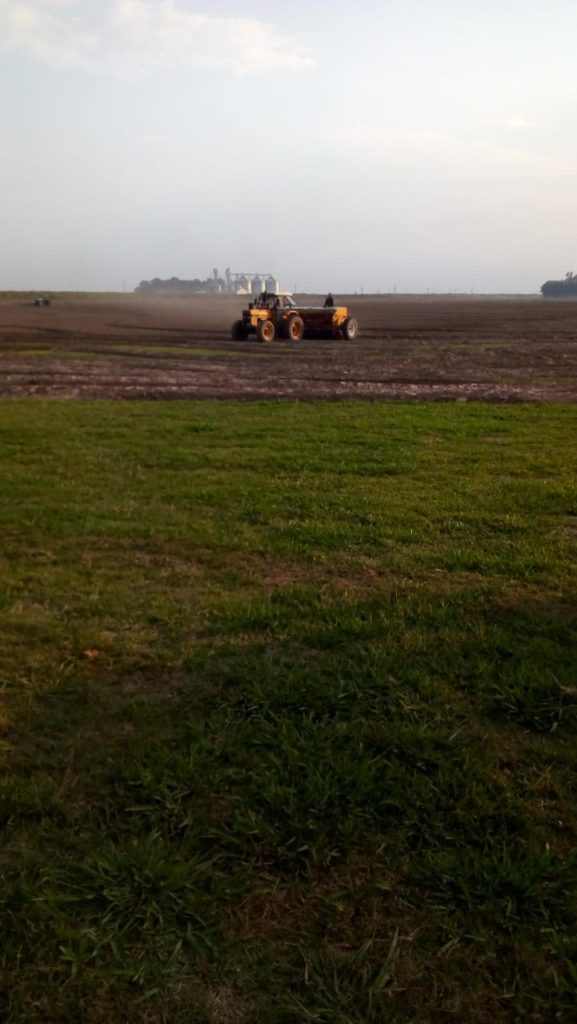
Como parte de nuestra participación en el desarrollo de las comunidades locales cercanas a nuestras operaciones, decidimos brindar un poco de apoyo a la pequeña escuela de la aldea de Artigas cerca de nuestra estancia al realizar algunas remodelaciones y mejoras de la estructura. El techo de la escuela se deterioró significativamente con las lluvias torrenciales registradas a principios de mayo, como puede ver. Ahora lo hemos arreglado, y también aprovechamos para acondicionar el comedor para los niños e instalar una pequeña cocina. Finalmente, se ajustó el pozo de agua utilizado para beber agua y cocinar para los niños. Queremos crear un ambiente saludable para 9 menores y sus maestros que intentan ir a la escuela, y promover condiciones de trabajo favorables para ellos. Puede ver la situación antes y después de las renovaciones.
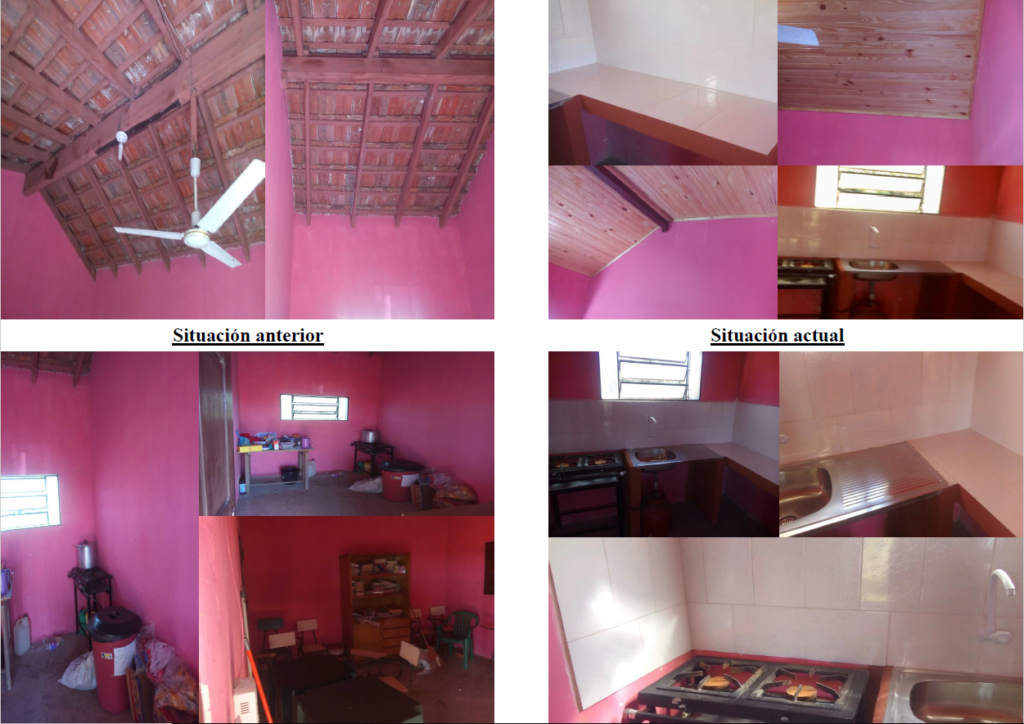
Finalizaron los preparativos de la tierra de los campos. Este ciclo, planeamos sembrar más de 1,500 ha con arroz. El cultivo de arroz exige una preparación pertinente de la tierra. Las operaciones incluyen desmonte, desmalezado, riego previo, arado y nivelación.


El objetivo principal de la preparación de la tierra es crear un ambiente favorable para que las plantas de arroz germinen y crezcan. La preparación adecuada de la tierra ayudará a:
1/ mejorar la estructura del suelo (mejor ventilación, permeabilidad y aflojamiento de la zona de la raíz) para facilitar la penetración de la raíz, y la topografía del campo para facilitar el riego y el drenaje,
2/ distribuir las malas hierbas y los residuos de los cultivos de manera uniforme sobre el campo e incorporarlos al suelo,
3/ obtener buena recuperación de nutrientes fertilizantes y control de malezas.


También estamos analizando nuevas protecciones contra rocas dentro del drenaje principal. Esas protecciones fueron construidas durante el período de mantenimiento de la temporada. Las semillas esperan ser sembradas.
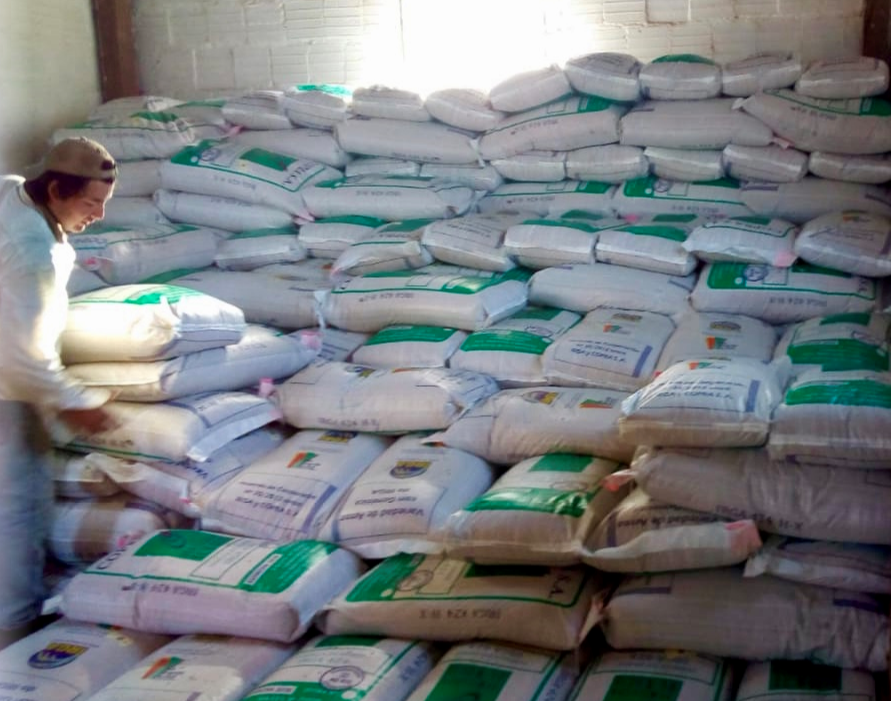
El acuerdo secreto firmado el 24 de mayo de 2019 entre Paraguay y Brasil con respecto a la central hidroeléctrica de Itaipú (una de las más poderosas del mundo) ha afectado al gobierno conservador del paraguayo Mario Abdo Benítez.
El acuerdo solo se hizo público a fines de julio. En menos de 24 horas, el ministro de Relaciones Exteriores y algunos otros altos funcionarios paraguayos se vieron obligados a renunciar después de enterarse de que los términos de la renegociación del acuerdo de planta de Itaipú benefician solo a Brasil. El acuerdo aumentaría los costos para Paraguay en más de USD 200 millones.
El Senado de Paraguay rechazó el acuerdo el 29 de julio e instruyó al Poder Ejecutivo para que manejara todas las negociaciones con Brasil relacionadas con Itaipú sobre la base de la transparencia.
El presidente de Brasil vino a rescatar a su aliado: Bolsonaro ve a Abdo como un aliado ideológico y sabe que cualquier futuro gobierno de Paraguay es poco probable que esté tan cerca de su gobierno como el actual. Un gobierno provisional del Partido Liberal tomaría un enfoque más duro para las negociaciones de Itaipú y muchos otros asuntos bilaterales y multilaterales que enfrentan los dos países. Brasil anunció el 1 de agosto la cancelación del acuerdo y ofrece una nueva negociación como una forma de ayudar a Abdo a salvar la cara.
Los miembros del partido Colorado retiraron su apoyo a la moción de juicio político que falló. El Parlamento paraguayo advirtió al presidente Abdo que no cometiera los mismos errores y también se creó una Comisión Bicameral de Investigación del Congreso para averiguar exactamente qué sucedió y por qué
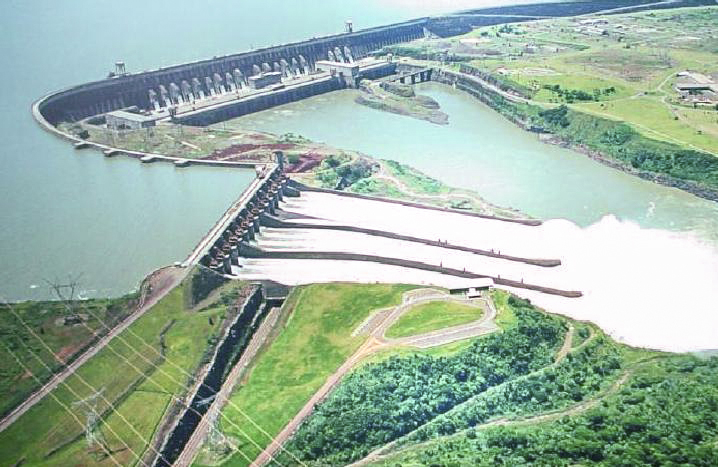
La Unión Europea y el bloque comercial sudamericano Mercosur (Argentina, Brasil, Paraguay y Uruguay – Venezuela también es miembro de pleno derecho pero ha estado suspendido desde 2016) llegaron a un acuerdo de libre comercio el 28 de junio de 2019.
Según el presidente de la Comisión Europea, Jean-Claude Juncker, el acuerdo afecta a una población combinada de más de 780 millones de personas (el área de libre comercio más grande del mundo) y ahorraría más de $ 4.5 mil millones en impuestos al año. Ambas partes actualmente comercializan más de € 88 mil millones en bienes y € 34 mil millones en servicios cada año.
El acuerdo es amplio y abarca tanto cuestiones arancelarias como reglamentarias, incluidos los servicios, la contratación pública, la facilitación del comercio, los obstáculos técnicos, las medidas sanitarias y fitosanitarias y la propiedad intelectual.
El acuerdo también abre el mercado de la UE a los productos de Mercosur. De los aranceles de la UE sobre las importaciones de Mercosur, el 92% se eliminará durante un período de transición de hasta 10 años. Sin embargo, la UE limitará las importaciones de productos agrícolas sensibles como carne de res, etanol, carne de cerdo, miel, azúcar y aves de corral; y estos productos deberán cumplir con las normas de la UE.
Perspectiva del ganado: Se asignará una nueva cuota anual de 99,000 toneladas para las exportaciones de carne de vacuno a los países miembros de la UE al Mercosur y las grandes explotaciones ganaderas de Sudamérica competirán con los productores locales de ganado más pequeños.
Otro ejemplo con el arroz: los productores argentinos y uruguayos (principalmente) podrían debilitar aún más el mercado europeo del arroz. De hecho, el arroz de los países del Mercosur es de grano redondo, el mismo tipo que se produce en el Levante español. Esto probablemente pondría en desventaja a los agricultores españoles, dado que el arroz Mercosur probablemente vendría a precios más bajos. Esto podría crear nuevas oportunidades de mercado para aquellos países además de Brasil.
La lista continúa, pero el acuerdo aún debe ser ratificado por los parlamentos nacionales de todos los países miembros de ambos bloques, así como por el Parlamento Europeo y el Consejo de la UE. Puede tomar de 2 a 3 años antes de ser efectivo. Sin embargo, si el Sr. Macri pierde las elecciones presidenciales de octubre ante el boleto populista de izquierda de la Sra. Kirchner y el Sr. Fernández, existe el riesgo de que Argentina opte por no quedarse.
En conclusión, este acuerdo creará nuevas oportunidades para los agricultores de Mercosur y podría forzar el desarrollo del actual modelo familiar predominantemente agrícola en la UE hacia unidades o grupos agrícolas industriales más modernos y sostenibles.